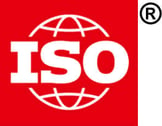Sintered parts start out as powder compacts, sometimes referred to as “green” parts. Heating these in a furnace -- a process known as sintering -- bonds the powder grains together, to create hard components ready for use.
Sintering of iron based PM parts is usually done at around 2020-2100°F. When done at higher temperatures, the process is called “high-temperature sintering.” High-temperature sintering changes part properties and can have amazing performance implications. Anyone specifying or purchasing sintered metal parts should know the differences and understand how this process can benefit both price and performance.
Below are the differences between regular and high-temperature sintering. We'll also address the benefits and drawbacks of the high-temp sintering and wrap up by describing some applications that can benefit from this advanced process.
What Is High-Temperature Sintering Vs. Conventional Sintering?
Sintering is a process of diffusion bonding. Below a material’s melting point, adjacent grains of metal begin to share molecules. This forms “necks” between the grains that lock them into a rigid structure.
Metallurgists carry out sintering in a controlled atmosphere. This has two functions:
-
Removes surface oxides so diffusion bonding can take place
-
Excludes oxygen from the furnace, preventing further oxidation
A high-temperature sintering furnace typically runs 100 to 250 degrees hotter than one used for regular sintering. The difference may seem small, but it has fascinating implications for component properties, operating costs, and furnace construction.
(DYK? Two distinct options called sinter bonding and sinter brazing are great for optimizing your project’s cost efficiency, strength, and more.)
Defining ‘High-Temperature’
Not all high temperatures are created equal.
OEM customers come to powder metal parts manufacturers with all sorts of definitions for “high-temperature sintering.” In a way, the definition depends on your perspective.
For example, in terms of stainless we’ve heard 2100° called “high-temp.” Technically, that’s (barely) correct because conventional sintering is performed at 2050°.
We prefer to think of “high-temperature” for structural powder metal parts as 2100°. For stainless steel PM parts, we consider 2350° an accurate description.
If you’re sintering these materials instead, here’s what we consider high-temperature:
-
Aluminum: 1350°
-
Copper: 1900°
-
Iron: 2150°
-
Tungsten: 3200°
So, it very much depends on the material you use.
Benefits of Higher-Temperature Sintering
A higher sintering temperature increases diffusion bonding and causes the remaining pores to become more round, improving the resulting mechanical properties. The necks between the grains grow larger, and the pores between grains shrink and become like tiny soccer balls. This shrinkage of pores leads to significant improvements in strength.
In one study, researchers were able to increase a component’s:
-
Tensile strength by 30%
-
Bending fatigue strength by 15%
-
Impact energy (a measure of toughness) by 50%
You may not realize it, but your specs may be a few hundred degrees short of where you should be performance-wise. It’s important the customer understands what the part has to do to get the performance you’re looking for. That’s where your PM parts maker should come in. Parts manufacturers with top-end capabilities may seem pricier, but they’ll also give you higher sintering temperatures for optimal performance.
Drawbacks Vs. Conventional Sintering
Improvements in sintered metal part strength come at a cost. (Isn’t there always a caveat?)
The components themselves actually shrink in size by the time it’s ready to be shipped. This can be addressed by your metal parts manufacturer during design of the compaction tools. Sometimes manufacturers limit maximum temperature to better control the part size.
Perhaps of greater relevance to buyers and end users, high-temperature sintering is more costly. That doesn’t necessarily mean parts produced through this process will be more expensive.
A paper presented at the International Conference on Powder Metallurgy & Particulate Materials (PM²TEC) addressed this apparent contradiction. Furnaces for high-temperature sintering are far more expensive than those for regular temperature work. In addition, productivity tends to be lower.
On top of that, as you get above the 2150° range, sintering belt life goes down dramatically. Fortunately, a few smart-thinking parts manufacturers have devised setups that avoid some belt-life issues.
Still, the supplier’s high production and equipment costs inevitably limits your own costs-effectiveness -- unless you take this opportunity to benefit from improved part properties.
Since sintered metal makes stronger parts, it's possible to switch to less expensive powder materials. In some cases -- and it is very application-specific -- this can actually result in less expensive sintered parts. Another way you can leverage these improved properties is to design smaller parts that require less material -- and therefore less investment.
Applications for Metal Parts Sintered at High Temperatures
The best candidates for high-temp sintering are projects where the component in question is subject to high tensile, and possibly fatigue, loads. These include components in appliances and firearms, but especially those in the automotive sector. With weight being an overarching concern in modern vehicles, any opportunity to reduce part size is a potential contribution toward fuel economy goals.
Improved properties open up new applications for sintered metal, too. More specifically, increased impact strength means sintered metal can be considered where wrought iron and steel are currently king. Brackets and hooks are examples -- we’d love to hear your other ideas, too.
The More Expensive Process May Be … Cheaper?
The majority of powder metal parts are sintered at around 2050°F, but some specific applications can benefit from moving to high-temperature sintering. The process is more expensive, yet can lead to lower-cost parts with smart design and the guiding hand of a high-temp sintering expert.
Assessing the value of sintering isn’t always all about temperature. Factors like atmospheric conditions also matter. If you need to know more about these more technical factors, it may be best to get in touch with a PM parts supplier.
Next up: Ultra-High-Temperature Sintering
Through unique, recent advances in powder metallurgy, you can take your component yet another step further -- through a process we call ultra-high-temperature sintering.
Ultra-high-temp sintering (UHTS) is defined as sintering ferrous powder at temperatures approaching 2500° F. The benefits of regular high-temperature sintering are augmented with UHTS.
If you have a question about any level of sintering, ask an expert engineer directly. It's as simple as clicking below:



